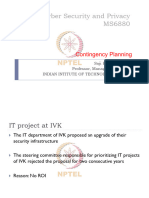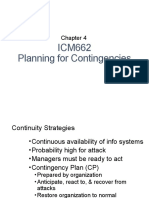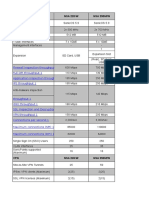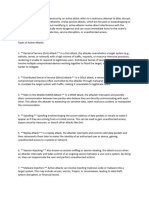0% found this document useful (0 votes)
38 views24 pagesModule 5
Module 5 covers the importance of contingency planning (CP) for organizations to manage unexpected adverse events that disrupt operations, highlighting key components such as Business Impact Analysis (BIA), Incident Response Plan (IR Plan), Disaster Recovery Plan (DR Plan), and Business Continuity Plan (BC Plan). It emphasizes the necessity of testing these plans and outlines the NIST methodology for developing a CP document, including the roles of various teams involved. Additionally, the module details the incident response process, including detection, reaction, recovery, and post-incident activities, while providing guidelines for effective incident management.
Uploaded by
theodoralex49Copyright
© © All Rights Reserved
We take content rights seriously. If you suspect this is your content, claim it here.
Available Formats
Download as DOCX, PDF, TXT or read online on Scribd
0% found this document useful (0 votes)
38 views24 pagesModule 5
Module 5 covers the importance of contingency planning (CP) for organizations to manage unexpected adverse events that disrupt operations, highlighting key components such as Business Impact Analysis (BIA), Incident Response Plan (IR Plan), Disaster Recovery Plan (DR Plan), and Business Continuity Plan (BC Plan). It emphasizes the necessity of testing these plans and outlines the NIST methodology for developing a CP document, including the roles of various teams involved. Additionally, the module details the incident response process, including detection, reaction, recovery, and post-incident activities, while providing guidelines for effective incident management.
Uploaded by
theodoralex49Copyright
© © All Rights Reserved
We take content rights seriously. If you suspect this is your content, claim it here.
Available Formats
Download as DOCX, PDF, TXT or read online on Scribd
/ 24
























































































